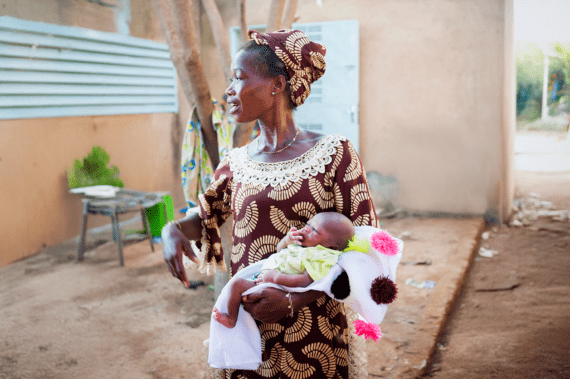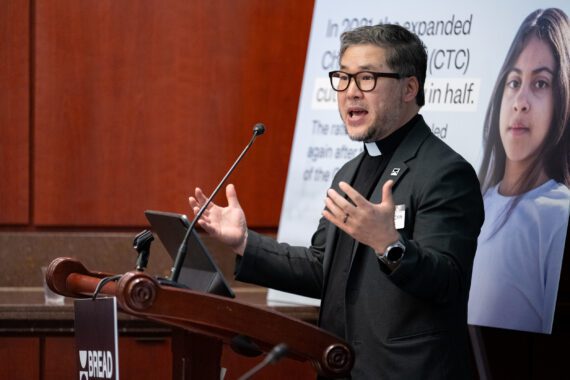Editor’s note: This is the fourth in a series that explores gender pay equity as an essential element of ending hunger. Read earlier pieces: “Reducing U.S. Hunger by Closing the Gender Wage Gap,” “A Closer Look at Gender Pay Inequities,” and “Gender Pay Equity Means Faster Progress Toward Ending Hunger.”
This year, several pieces in Bread for the World’s Institute Insights newsletters provide a more detailed look at gender pay gaps and their impact on hunger and poverty in the United States. Please see links to earlier articles above.
One way to visualize pay gaps that affect women, as we explained, is the idea of Equal Pay Day. This is the date when female workers have been paid the same amount as their male counterparts were paid by December 31 of the previous year. In other words, if men were paid $50,000 in 2023, Equal Pay Day is the date in 2024 when women have “caught up” by also receiving $50,000. This year, Equal Pay Day for U.S. women as a whole was March 12. But discrimination based on race and ethnicity pushes Equal Pay Days for women of color much further into the calendar year. These days include July 9 for Black women, October 3 for Latinas, and November 21 for Native American women.
The primary legislation aimed at preventing pay discrimination based on gender remains the Equal Pay Act of 1963. While pay gaps between men and women are narrower today than 60 years ago, progress has been extremely slow. If the pay gap continues to shrink at the average pace of the years 2000-2021, it will take an additional 42 years to close the gender pay gap for U.S. women as a group. Today’s 25-year-old women would not see pay equity until after their retirement. Black, Latina, and Native American women are projected to face gender pay gaps for many decades after that.
In the past, gender pay gaps were even wider. This helps explain why many elderly women today live on very limited incomes. Even if they worked outside the home until retirement age, their Social Security checks are likely to be much smaller than men of their generation, because their total earnings were significantly lowered by the gender wage gap.
Bread’s earlier pieces in this series mentioned several recommendations from experts on how to speed up progress in closing the gap. Our U.S. anti-hunger advocacy work includes ending racial and gender inequities, protecting the rights of workers, and urging the creation of jobs that enable people to meet their basic needs. The gender pay gap would be narrowed by progress in these areas.
Strengthening the Equal Pay Act of 1963 would also speed up progress. Many of the improvements that advocates have proposed are designed to close loopholes and solve other problems that existed in the original law. For example, employers can legally pay men and women different wages if they work for the same company but at different locations. Some loopholes are based on factors that are themselves the result of gender pay discrimination, such as paying men more if they have higher past salary histories.
The Paycheck Fairness Act, a bill that has been introduced in Congress several times, would redress such loopholes. It passed the House in April 2021 but remains stalled in the Senate. The bill would also make other improvements in the Equal Pay Act, such as protecting workers from retaliation for challenging pay inequities and making it easier to bring class action lawsuits.
One aspect of the problem is far more difficult to solve by making policy changes, and that is societal devaluation of work that is done by women. A classic example is the field of veterinary medicine. Research conducted for Vetspanel, a professional organization for veterinarians, explains, “The veterinary industry seems to add another industry datapoint to the theory that when an industry starts (for any reason) to become more female, its perceived value, and therefore salary level, drops.” The work did not become simpler, but by 2020, nearly 75 percent of all veterinarians were women.
In our next piece, we’ll look at an evolving success story — the only country in the world that has managed to reduce its gender pay gap to less than 10 percent. Can the United States make progress against gender pay inequities by following Iceland’s example?
Michele Learner is managing editor, Policy and Research Institute, with Bread for the World.



